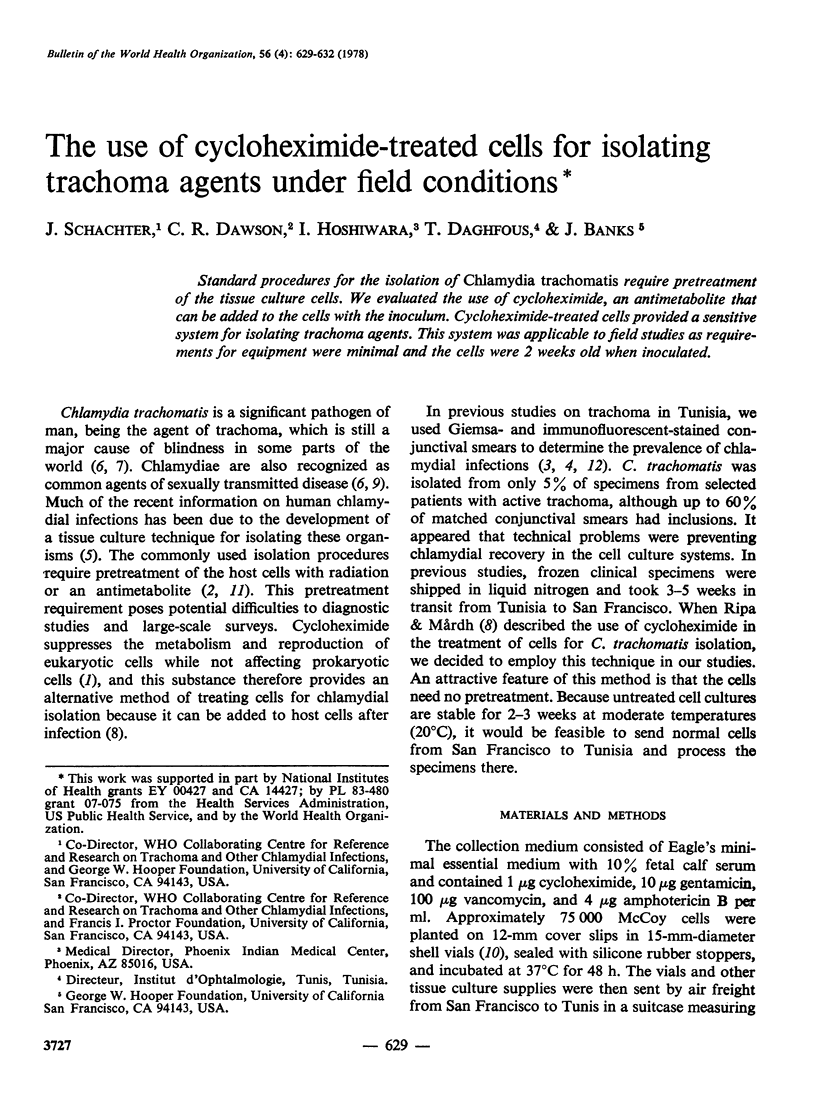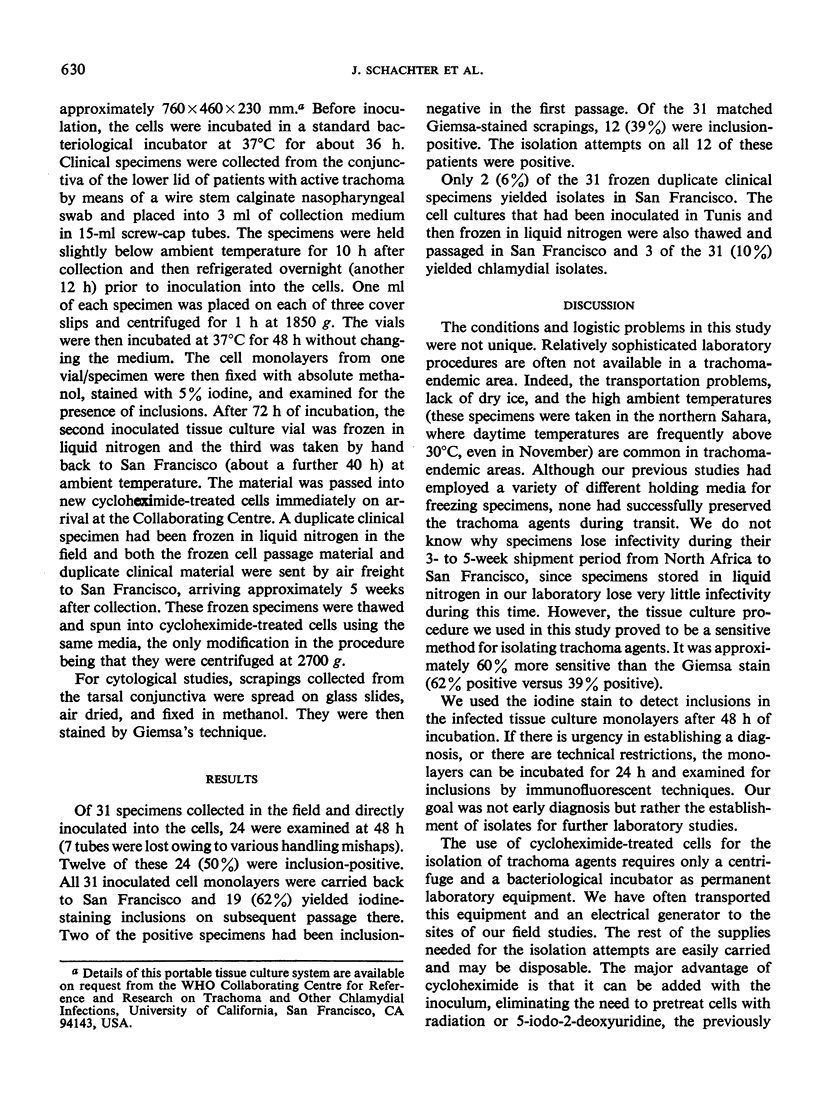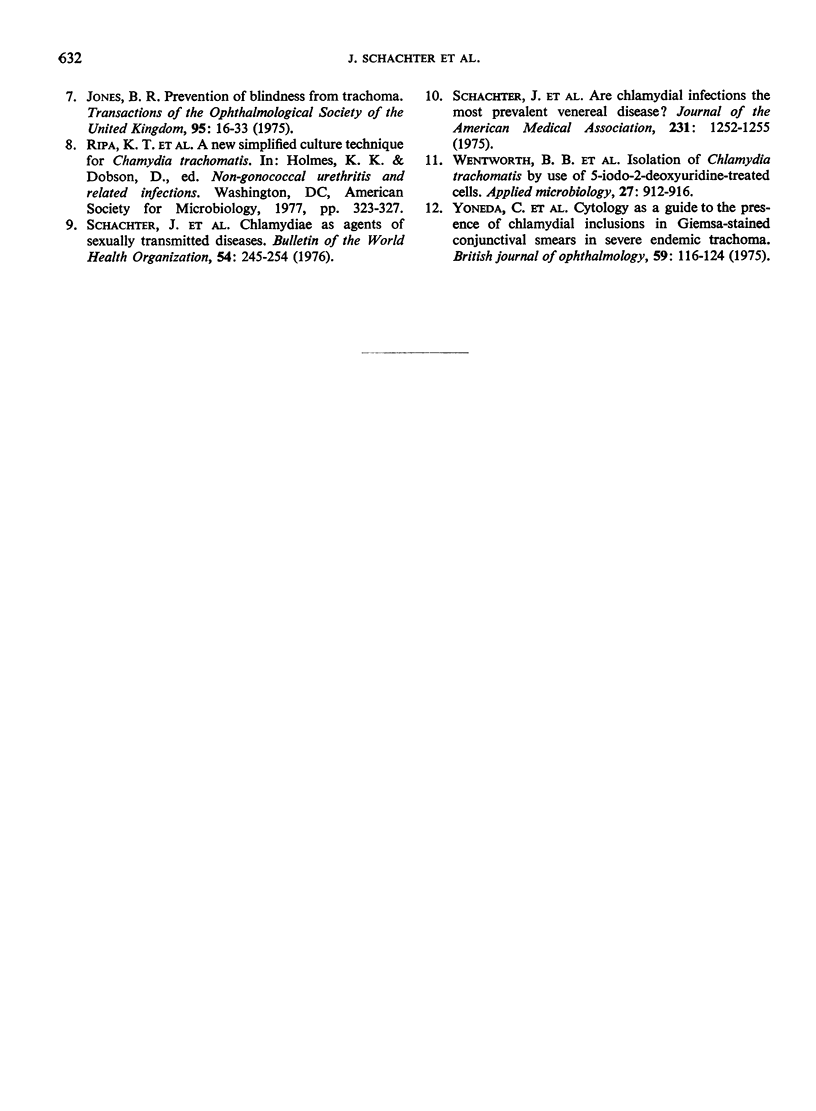Abstract
Standard procedures for the isolation of Chlamydia trachomatis require pretreatment of the tissue culture cells. We evaluated the use of cycloheximide, an antimetabolite that can be added to the cells with the inoculum. Cycloheximide-treated cells provided a sensitive system for isolating trachoma agents. This system was applicable to field studies as requirements for equipment were minimal and the cells were 2 weeks old when inoculated.
Full text
PDF



Selected References
These references are in PubMed. This may not be the complete list of references from this article.
- Alexander J. J. Effect of infection with the meningopneumonitis agent on deoxyribonucleic acid and protein synthesis by its L-cell host. J Bacteriol. 1969 Feb;97(2):653–657. doi: 10.1128/jb.97.2.653-657.1969. [DOI] [PMC free article] [PubMed] [Google Scholar]
- Darougar S., Jones B. R., Kinnison J. R., Vaughan-Jackson J. D., Dunlop E. M. Chlamydial infection. Advances in the diagnostic isolation of Chlamydia, including TRIC agent, from the eye, genital tract, and rectum. Br J Vener Dis. 1972 Dec;48(6):416–420. doi: 10.1136/sti.48.6.416. [DOI] [PMC free article] [PubMed] [Google Scholar]
- Dawson C. R., Daghfous T., Messadi M., Hoshiwara I., Schachter J. Severe endemic trachoma in Tunisia. Br J Ophthalmol. 1976 Apr;60(4):245–252. doi: 10.1136/bjo.60.4.245. [DOI] [PMC free article] [PubMed] [Google Scholar]
- Dawson C. R., Daghfous T., Messadi M., Hoshiwara I., Vastine D. W., Yoneda C., Schacter J. Severe endemic trachoma in tunisia. II. A controlled therapy trial of topically applied chlortetracycline and erythromycin. Arch Ophthalmol. 1974 Sep;92(3):198–203. doi: 10.1001/archopht.1974.01010010206003. [DOI] [PubMed] [Google Scholar]
- GORDON F. B., QUAN A. L. ISOLATION OF THE TRACHOMA AGENT IN CELL CULTURE. Proc Soc Exp Biol Med. 1965 Feb;118:354–359. doi: 10.3181/00379727-118-29841. [DOI] [PubMed] [Google Scholar]
- Grayston J. T., Wang S. New knowledge of chlamydiae and the diseases they cause. J Infect Dis. 1975 Jul;132(1):87–105. doi: 10.1093/infdis/132.1.87. [DOI] [PubMed] [Google Scholar]
- Schachter J., Causse G., Tarizzo M. L. Chlamydiae as agents of sexually transmitted diseases. Bull World Health Organ. 1976;54(3):245–254. [PMC free article] [PubMed] [Google Scholar]
- Schachter J., Hanna L., Hill E. C., Massad S., Sheppard C. W., Conte J. E., Jr, Cohen S. N., Meyer K. F. Are chlamydial infections the most prevalent venereal disease? JAMA. 1975 Mar 24;231(12):1252–1255. [PubMed] [Google Scholar]
- Wentworth B. B., Alexander E. R. Isolation of Chlamydia trachomatis by use of 5-iodo-2-deoxyuridine-treated cells. Appl Microbiol. 1974 May;27(5):912–916. doi: 10.1128/am.27.5.912-916.1974. [DOI] [PMC free article] [PubMed] [Google Scholar]
- Yoneda C., Dawson C. R., Daghfous T., Hoshiwara I., Jones P., Messadi M., Schachter J. Cytology as a guide to the presence of chlamydial inclusions in Giemsa-stained conjunctival smears in severe endemic trachoma. Br J Ophthalmol. 1975 Mar;59(3):116–124. doi: 10.1136/bjo.59.3.116. [DOI] [PMC free article] [PubMed] [Google Scholar]


